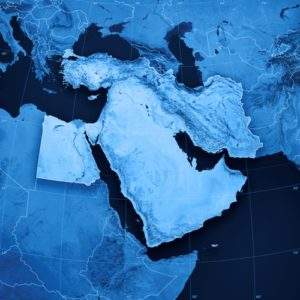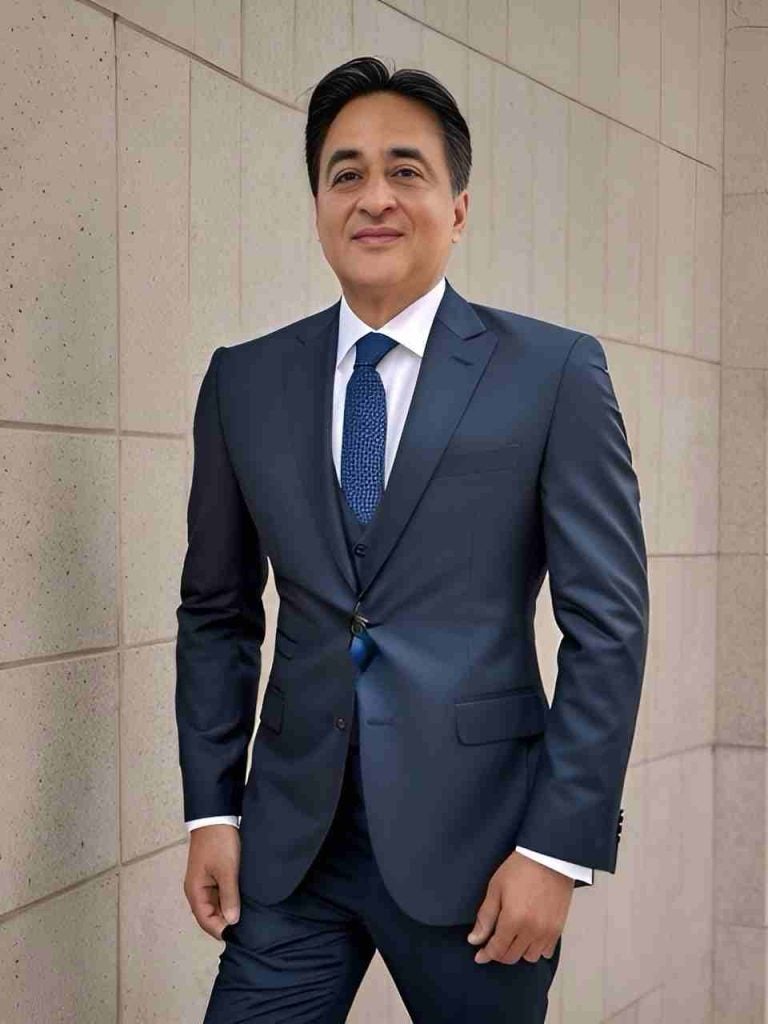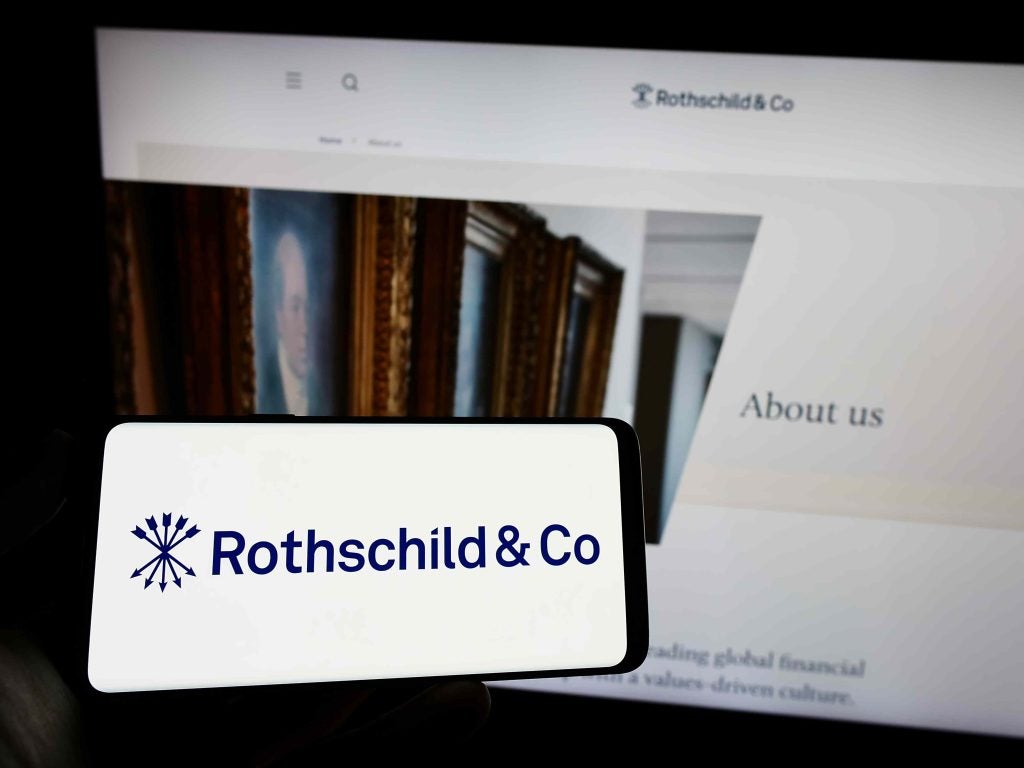
The wealth management sector’s strong growth in the Middle East is a relatively modern phenomenon, certainly in today’s industry centre of the UAE, within which Dubai is the leading player; and neighbouring Abu Dhabi a relative upstart, albeit one with serious growth ambitions.
Julius Baer has been investing heavily in the region in recent years and that commitment has been paying off, according to Daniel Savary, global head of Middle East & Africa at Julius Baer.
Julius Baer was the first international private bank to be granted a licence to trade in the then brand new Dubai International Financial Centre (DIFC) in 2004.
It now employs around 140 people in Dubai, which serves as its regional hub, and also has operations in Cairo, Lebanon, Bahrain, and Abu Dhabi.
Savary says: “In the past six years the contribution of the Middle Eastern markets has increased a lot and has made a strong contribution to new business and increased revenues.”
The Middle East – and the UAE in particular – are of significant strategic importance to us.”
How well do you really know your competitors?
Access the most comprehensive Company Profiles on the market, powered by GlobalData. Save hours of research. Gain competitive edge.

Thank you!
Your download email will arrive shortly
Not ready to buy yet? Download a free sample
We are confident about the unique quality of our Company Profiles. However, we want you to make the most beneficial decision for your business, so we offer a free sample that you can download by submitting the below form
By GlobalDataJulius Baer’s approach of using the DIFC as a regional base is a typical modus operandi for most of the big global banks and wealth managers that have set out their stall in the region.
Since 2004, providers have been lured there by an absence of corporate tax on income and profits (guaranteed for at least fifty years), a modern, flexible regulatory environment, unconstrained freedom to move capital in and out of this ‘free zone’, and its own financial services-friendly English language common law legal system.
During this time the DIFC has firmly established itself as a major financial centre that is pulling into its orbit more and more of the world’s leading financial institutions.
For many of them, the attraction and opportunity extends beyond wealth management and private banking into investment banking, capital markets, asset management, funds and insurance; all of which are tapping into the wealth of the region and helping to generate more of it.
And it is no longer only the local or even regional wealth and opportunities that private banks are seeking to access by basing themselves in the DIFC or Abu Dhabi Global Market (ADGM).
Gateway to global opportunities
The UAE is increasingly a destination for international flows of capital and a gateway to more global opportunities.
Mark Mills, Middle East and North Africa head of head of DIFC-based CITI Private Bank, says: “An interesting approach to looking at the UAE as a regional private banking centre is following flows of wealth. They are coming into the UAE from India, from the UK, for tax purposes mainly, and increasingly from Africa,” says
Mills says that Dubai is a “convenient regional meeting point”, which is why, for example, more family offices from Africa are setting up in the emirate.
“They like the proximity, the access to talent and expertise that’s here. It’s important to have a meaningful, well resourced, presence, which means we can respond very quickly to local demands.”
The UAE’s growing credentials as a financial centre of global importance are underpinned by rising regional wealth and a cautiously positive economic outlook.
A 2017 report by the Boston Consulting Group found UHNW wealth grew by 8.5% year-on-year in the Middle East and Africa region in 2016, to reach $8.1trn, and forecast it would exceed $12trn by 2021.
Oil is the foundation on which that wealth has been built, but its spectacular price collapse in 2014 and the end of the so-called commodities ‘super cycle’ has hastened recognition among oil-rich countries that longer-term economic dependence on an increasingly volatile fossil fuel may be unwise.
Efforts are under way in Gulf nations to modernise and diversify their economies.
The UAE is ahead of the game in this respect. The establishment of the DIFC in 2004 is just one example of its moves to broaden the economy.
The UAE is also strong in tourism, media, has the world’s fourth largest port and is increasingly a gateway to trade in other parts of the Middle East, South Asia and Africa.
It also is a regional hub for start-ups and entrepreneurs, in itself a key attraction to wealth managers and banks.
The pay off from these efforts is evident in the fact that in 2015, some 70% of the UAE’s GDP came from non-oil sectors, a figure that is forecast by the UAE’s Ministry of the Economy to rise to 80% by 2021.
The DIFC has a growth strategy that aims to see it recognised as one of the world’s top 10 financial centres by 2024 and deliver an 18% contribution to Dubai’s GDP from financial services over the same period, generated by achieving targets including tripling the number of domiciled firms to more than 1,000 and increasing the DIFC’s workforce to in excess of 50,000.
Economic diversification is also a strategic objective for the Arab world’s largest economy and one in which some 50% of GDP currently comes from oil and gas: Saudi Arabia.
Saudi Arabia focus
In 2016 the kingdom unveiled plans for major and wide-ranging economic reforms under its Vision 2030 initiative, designed to open up its economy to global trade and transition it to become a regional commercial centre.
Plans include investing in new industries, including tourism, cultural and leisure attractions attractions, creating the world’s largest sovereign wealth fund and making improvements to public services such as education and healthcare.
Suvo Sarkar, senior executive vice president – head of retail banking and wealth management at Emirates NBD says: “We anticipate the Saudi government reform plan will accelerate growth and open new opportunities around the region.”
Similarly, Naushid Mithani, Standard Chartered Private Bank’s UAE head of private banking, singles out the UAE and Saudi Arabia as “bright spots” in the Middle Eastern wealth markets.
Mithani says the Middle East investment market was expected to have more than doubled between 2012 and 2020, from USD $600bn to USD $1.5trn, a 12% annualised growth rate.
“This growth is, in part, driven by the rise in affluent and high net worth individuals, who will increasingly seek the support of professional fund managers to protect and grow their personal wealth. We see this as a natural progression as these wealthy investors – many of whom are business owners juggling multiple demands – increasingly appreciate the value of expert advice.”
Moves to diversify and broaden economies, coupled with growing investable wealth, are encouraging wealth managers and private banks to invest in the region more as they expect wealth generation to increase and spread across sectors and demographic groups.
UBS – Middle East
UBS has doubled its headcount in its main Dubai centre in the past three years and now has more than 60 employees in the wider region, primarily in Dubai and Saudi Arabia, and says it plans to grow further.
Barclays, too, has been scaling up its Middle East presence with senior private banker hires, including a new head of investments and a head of its Strategic Solutions Group, and plans additional recruitment, having identified the Gulf area as the main opportunity as the economies there grow and diversify.
As an example of the benefits of a strong local presence, CITI Private Bank’s Mills says a year ago it was decided to base two members of the bank’s fifty-strong global investment resource, the Investment Lab, in the UAE.
He says the unit operates like an investment consultancy, staffed by CFA and PhD level individuals who work (without additional costs) on bespoke projects for CITI’s ultra high net worth clients.
As a result of this decision, Mills says the number of projects originating from local clients being worked on by the global Investment Lab team has more than doubled in a year.
“Having them here really enhances a relationship with a client. Clients of this level don’t really want or need to see product people, they don’t want to talk about products, but they do want original, high level research and analysis and we can provide that for them.
“It’s been such a success that we’ll be looking to increase the local resource further,’ he adds.
While the pendulum appears to be continuing to swing in favour of the Middle East as far as private banks are concerned, operating in the region does come with challenges and some quite significant risks.
“Geopolitics can be a significant and unpredictable factor. We have seen this recently in relation to Qatar, Saudi Arabia and Iran. These issues can always result in the imposition of rules, regulations and restrictions that affect us and how go about doing business as usual. For example, such situations can result in individuals and companies being sanctioned. You do need to have a lot of risk monitoring to run your business,” says Julius Baer’s Savary.
Local trends in a global market
Investment in training
Banks are not just bringing in new headcount, but also investing more in the skills of their existing staff, in recognition of the fact that increasingly savvy and discerning high net worth and ultra high net worth clients in the Middle East expect a high level of expertise from relationship managers.
Standard Chartered’s Mithani says the bank has initiated a training programme for frontline staff in partnership with Fitch Learning and INSEAD business school to “enable them to deliver a higher level of service and advice to our clients…..which goes beyond building their sales and product knowledge and instead focus on helping them to adapt to the fast-evolving and increasingly digital future of private banking.”
Growth of technology
Technology and digitalisation is another key area of investment for private banks and wealth managers.
Barclays, for example, has recently introduced voice biometrics allowing private banking clients in the Middle East to access their accounts with their voice alone.
Almost all providers are enhancing their technology in multiple ways, ranging from front-end client facing services such as mobile portfolio access and more efficient information and dealing through to automating back office and administrative functions.
Nevertheless, Mithani says the “human touch” remains vital in such a relationships-focused business.
“We see digital as a complementary, rather than disruptive force.” He says technology should go beyond client-facing solutions and capabilities to empowering relationship managers to do their job better, citing the introduction of a Reuters-linked platform called ADVICE that equips RMs with the latest markets and price data and research reports.
Emirates NBD’s Sarkar says AED 1bn has recently been invested in digitalisation initiatives, resulting in several changes to the way it runs its wealth management services, including the introduction of a hybrid advice model and the on-going development of robo-advice capabilities.
“We anticipate that hybrid advice models will be the norm rather the exception as more private banks cotton on to the benefits of automating routine functions such as opening new accounts, client-onboarding, transferring assets, while retaining the wealth manager’s role of providing strategic advice profiling and execution.”
He says the use of apps and mobile technology is now embedded in its wealth management model and that, rather than depersonalising the service, the growing use of technology provides investment advisers and clients with more opportunities to engage with each other, and for the advisers to gain a better understanding of what clients want.
Sarkar says “undoubtedly, technology has the biggest influence on the way wealth management is conducted today,” adding that Big Data, AI and Blockchain technologies are also being “engaged” to enhance product suitability measures and execution capabilities.
Wealth transfer and succession planning
Discussions around wealth transfer and succession planning are increasingly coming to the fore in the Middle East, providing additional opportunities for private banks and wealth managers to offer services and solutions.
Standard Chartered’s Mithani says the reason for this is because many UHNW clients in the Middle East are entrepreneurs and first or second-generation business owners, meaning issues of wealth transfer are relatively new to them.
“Most of their wealth is tied up in their businesses and the ability of an investment adviser who can help them to monetise their businesses is important to them. Succession planning is yet another top-of-mind priority for them. They are concerned about the transfer of wealth and their businesses to the next generation.”
The DIFC is alive to these issues, all too aware of the importance of keeping up with the needs of its wealth management industry stakeholders.
It has recently enacted an updated trust law and introduced a new foundation structure designed to help with wealth and family business succession planning and which it said would ‘set a new global standard’ in the area of succession planning and “insolvency remote” corporate structures.
Millennials and impact investing
According to both Emirates NBD’s Sarkar and Standard Chartered’s Mithani, wealth transfer between generations, and growing millennial wealth, is also leading banks and wealth managers to place greater focus on philanthropy in their service offerings.
Says Sarkar: “A trend we are seeing is a growing sense of philanthropic engagement, especially among NextGen clients who tend to be more socially and environmentally minded and influenced by social media and opinion makers when it comes to issues and causes. With the level of intergenerational wealth transfers set to rise sharply, we anticipate that the next generation will be more willing to drive change and will also seek deeper engagement while giving.”
Standard Chartered estimates that AUM in impact investing could grow from $77bn to $300-$400bn by 2020, mainly driven by millennial wealth.
Mithani says the bank has launched a series of ESG funds to cater for this demand and will “continue to develop our sustainable investing platform to position for future client demand,”.







